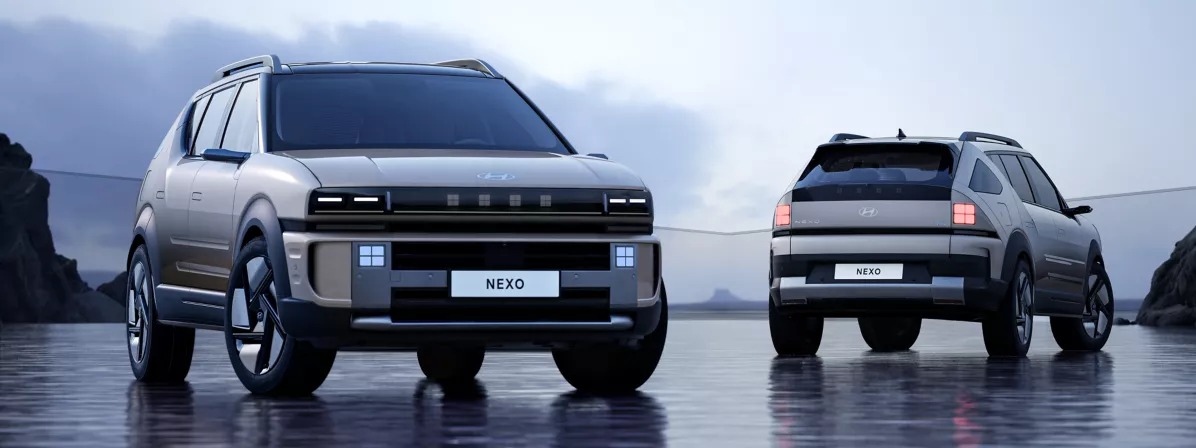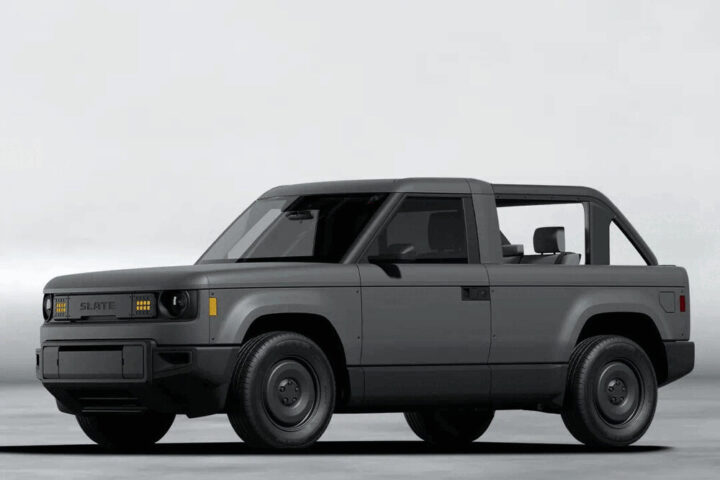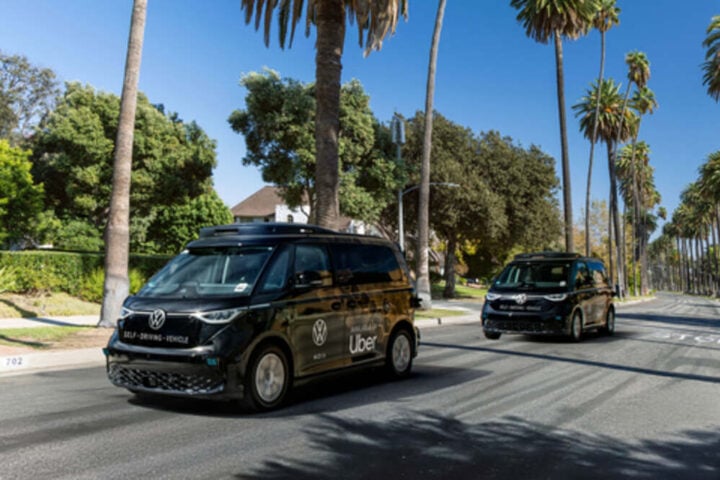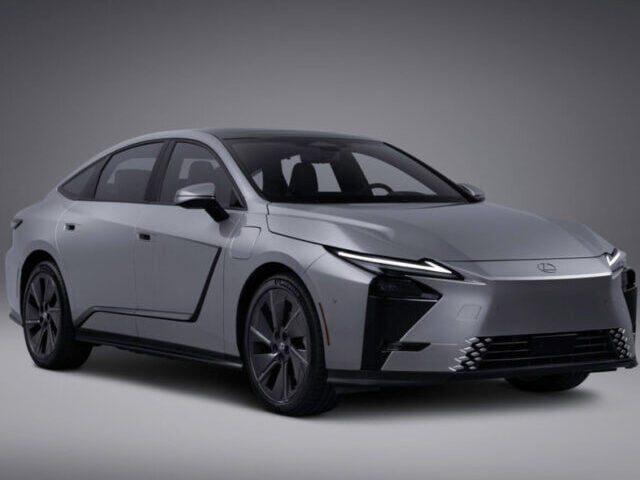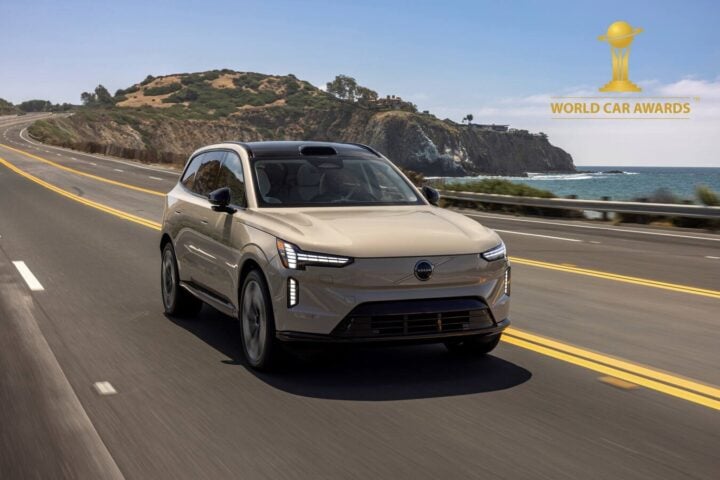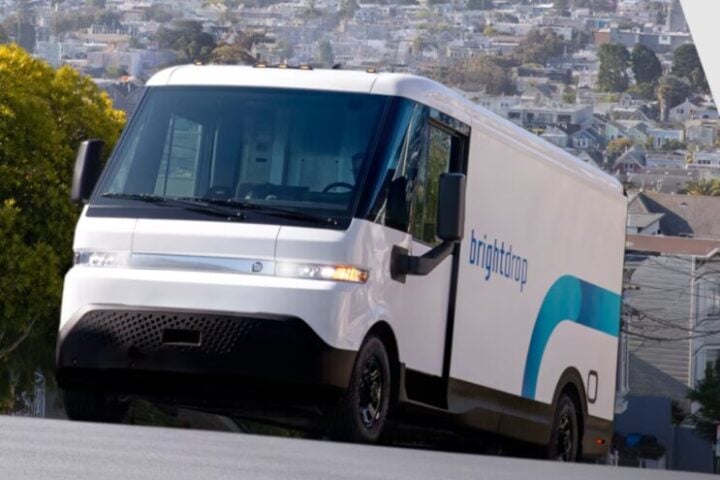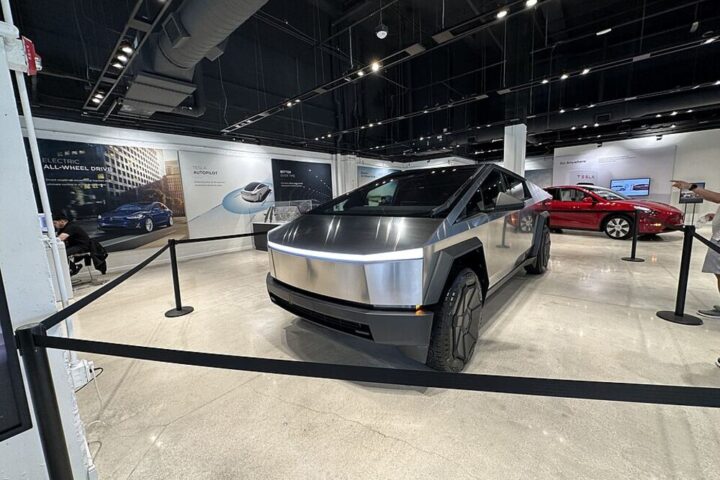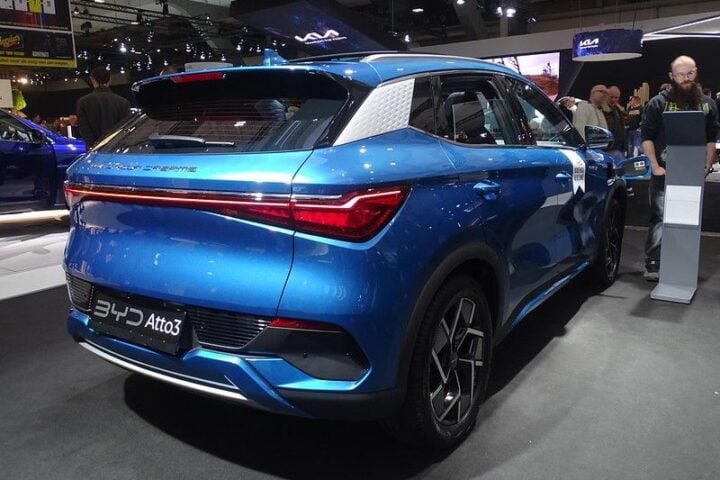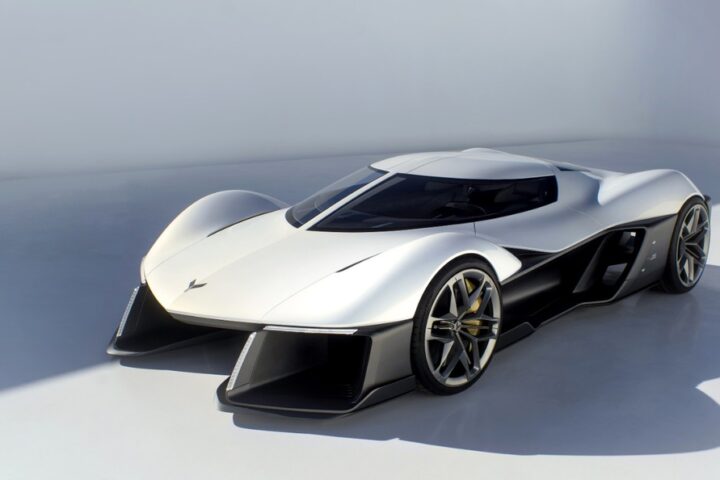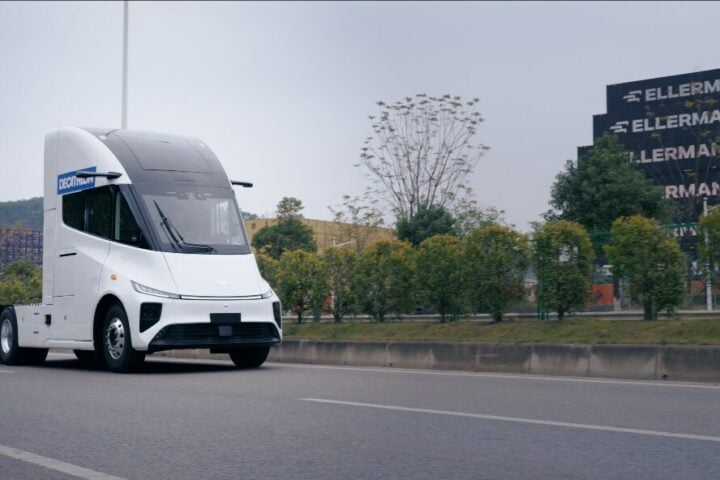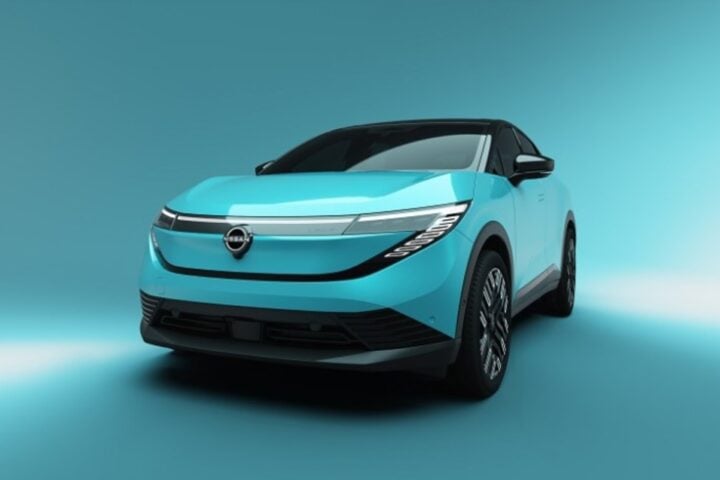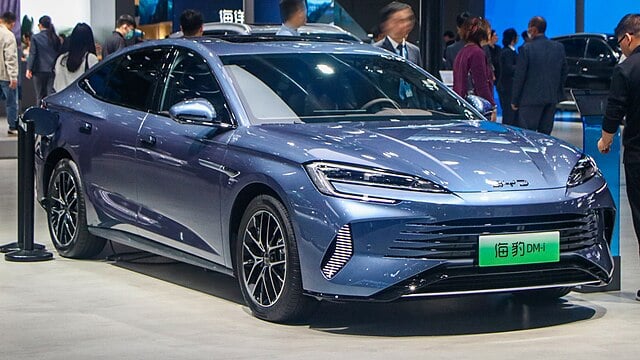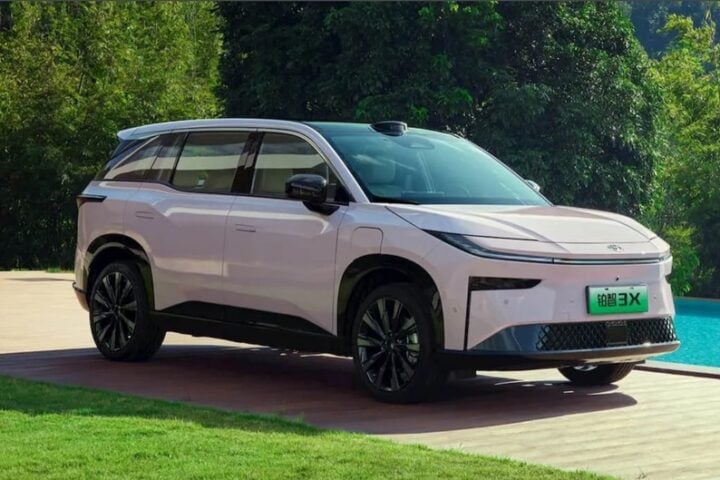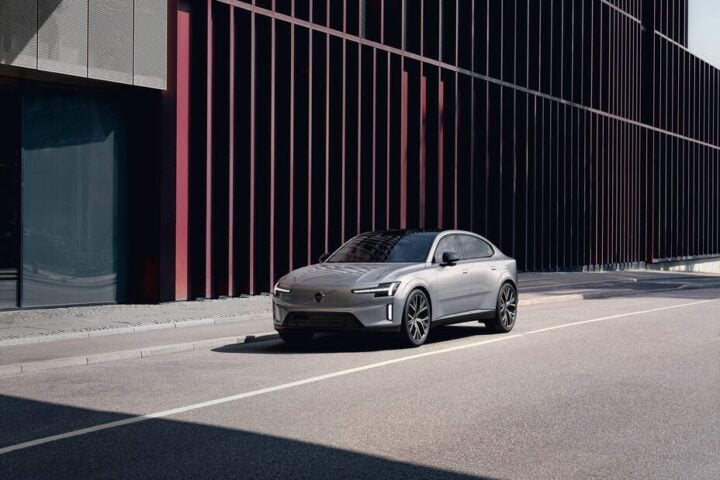Hyundai Motor Company has pulled the covers off its second-generation Nexo hydrogen fuel cell electric vehicle (FCEV) at the Seoul Mobility Show 2025, pushing the boundaries of what’s possible in the zero-emission mobility space. This mid-size SUV represents a quantum leap in hydrogen technology while showcasing Hyundai’s commitment to a multi-pathway approach to vehicle electrification.
Art of Steel: Rugged Sophistication Meets Hydrogen Innovation
Based on the INITIUM concept unveiled in October 2024, the all-new Nexo embodies Hyundai’s fresh “Art of Steel” design language. The exterior presents a sturdy, sophisticated silhouette with bold lines and a solid structure that projects ruggedness without sacrificing refinement.
“The resilience and versatility of steel deliver tension and strength, with the resulting shapes a form of art,” explains Hyundai in its official release.
What truly sets the Nexo apart visually are its distinctive “HTWO” Lamps, creating an FCEV-specific design signature that represents Hyundai Motor Group’s hydrogen brand and its “Hydrogen for Humanity” message. Four “Dot Lamps” ensure the Nexo remains recognizable as a Hyundai even in nighttime conditions.
The new Nexo will be available in six colors, including a standout “Goyo Copper Pearl” inspired by Korean cultural elements. This particular finish uses a three-coat paint process that creates a multidimensional effect, with the body color shifting based on viewing angle and lighting conditions.
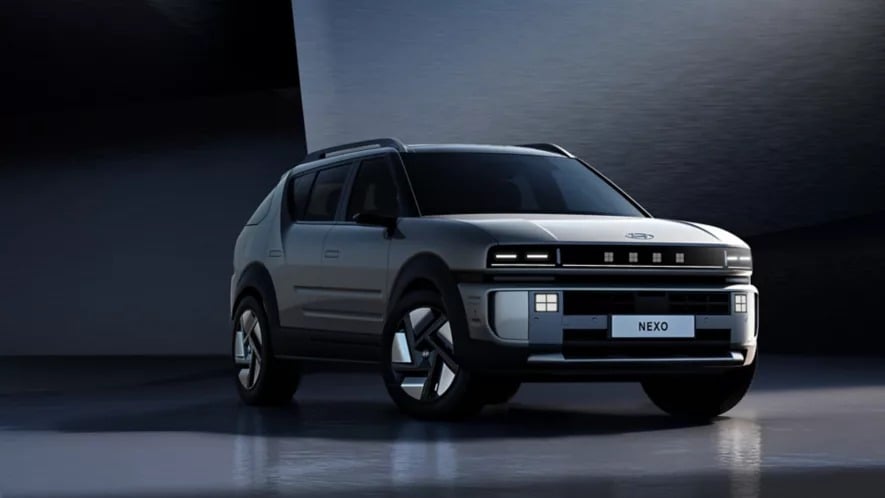
Powerhouse Performance: Enhanced Range and Acceleration
Under the hood, the Nexo showcases Hyundai’s 27 years of fuel cell technology expertise. The powertrain advancements are substantial:
- A hydrogen fuel cell stack delivering 110 kW of maximum gross power (a 16% increase)
- A new electric motor providing up to 150 kW (201 hp)
- Battery output doubled from 40 kW to 80 kW
- Increased hydrogen tank capacity of 6.69 kg (up from 6.33 kg)
- 0-100 km/h acceleration in 7.8 seconds (versus 9.2 seconds for its predecessor)
Hyundai is targeting more than 700 km of range from a five-minute hydrogen charge, putting the Nexo in the upper echelon of zero-emission vehicles for long-distance travel capability.
The Nexo also introduces a pioneering e-Handling system that enhances driving dynamics through motor torque control, optimizing grip and improving steering response and stability.
Cold-Weather Capability: Addressing FCEV Pain Points
Hyundai has specifically addressed one of the historical challenges of hydrogen vehicles with improved low-temperature operability. The fuel cell stack features durability enhancements, including membrane improvements and a uniform cell performance structure. A “Wake Up” stack anti-freezing function and system optimizations enhance cold-weather drivability and starting reliability year-round.
Similar Posts
Interior Comfort: Sustainable Luxury and Cutting-Edge Tech
The Nexo’s cabin represents a balance of comfort, technology, and sustainability. The interior uses rich, soft padding with patterns meant to evoke the warmth of home. A curved, driver-centric display, intuitive controls, and an island-type center console with ample storage space create what Hyundai calls a “Furnished Space” with high-tech elements.
The second-generation Nexo is longer, wider, and taller than its predecessor, resulting in:
- Improved passenger comfort
- Increased rear cargo capacity (993 liters maximum)
- First-row Premium Relaxation Seats with leg rests
- Ventilated second-row seats with increased reclining angles
- Wider rear door openings (80 degrees vs. 70 degrees previously)
Sustainable materials are used throughout the cabin, including bio-process leather, recycled PET fabric, linen fabric, bio plastic, bio TPO skin, bio paint, bio PU slab foam, and recycled automotive plastic waste.
Tech Features: Connected and Convenient
The Nexo comes loaded with advanced technology features:
- ccNC (Connected Car Navigation Cockpit) system with a curved display
- 12.3-inch driver information cluster paired with a 12.3-inch infotainment monitor
- Over-the-air (OTA) software updates
- Generative AI voice recognition
- Wireless Apple CarPlay and Android Auto
- Premium Bang & Olufsen Sound System with up to 14 speakers
- Digital side mirrors integrated into the dashboard
- Vehicle-to-load (V2L) functionality for powering external devices
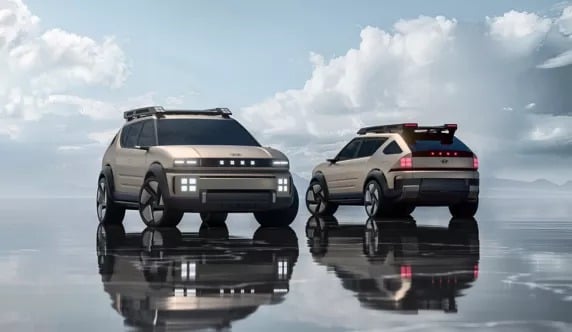
Industry First: Towing Capability for an FCEV
In a notable first for the hydrogen vehicle segment, European-specification models of the all-new Nexo will offer towing capability of up to 1,000 kg. This practical feature addresses a key limitation of many alternative-fuel vehicles and enhances the Nexo’s versatility for family use.
Comprehensive Safety Systems
Safety has been a clear focus in the Nexo’s development, with Hyundai targeting top-tier ratings across major global safety assessment programs. The vehicle features:
- A multi-skeleton structure with hot stamping and high-strength materials
- Up to nine airbags protecting passengers and the hydrogen tank
- Latest Advanced Driver Assistance System (ADAS) technologies
- Third-generation ultra-high strength steel with improved formability
- Reinforced front-end components and multi-load path structures
The extensive ADAS suite includes Forward Collision-Avoidance Assist, Lane Keeping Assist, Blind-Spot Collision-Avoidance Assist, Highway Driving Assist, and Remote Smart Parking Assist 2, among many others.
Market Prospects and Infrastructure Challenges
While the technological advancements in the new Nexo are impressive, the hydrogen infrastructure remains a limiting factor for widespread adoption. The vehicle is expected to launch globally later this year, but markets with limited hydrogen refueling infrastructure—such as India—will likely see delays in availability.
Hyundai continues to expand FCEV infrastructure and strengthen its position as a pioneer in hydrogen mobility under its HTWO brand. The company’s commitment to becoming a “smart solutions provider across the full mobility spectrum” suggests the Nexo is part of a broader strategy that includes battery electric vehicles (BEVs), hybrids, and FCEVs.
Specifications at a Glance
- Dimensions: Length 4,750 mm, Wheelbase 2,790 mm, Width 1,865 mm, Height 1,640 mm (1,673 mm with roof rack)
- Cargo capacity: 1,719 liters (behind 1st row) / 993 liters (behind 2nd row)
- Fuel cell stack power: 110 kW (Gross) / 94 kW (Net, FC system output)
- Motor output: 150 kW front (350 Nm)
- High voltage battery: 80 kW power, 2.64 kWh energy
- Hydrogen tank: 162.6 liters (54.2 liters x 3), up to 6.69 kg usable H2
- Target driving range: 700+ km (with 18-inch wheels and GL trim, Korea domestic model)
- Projected max fuel economy: 97.8 km/kg
- Performance: Max speed 179 km/h / 111 mph, 0-100 km/h in 7.8 seconds
As the global automotive industry continues its transition toward zero-emission transportation, Hyundai’s all-new Nexo represents a sophisticated alternative to battery electric vehicles, offering rapid refueling, impressive range, and zero tailpipe emissions. Its success, however, will depend significantly on the concurrent development of hydrogen refueling infrastructure across global markets.
Frequently Asked Questions
The second-generation Hyundai Nexo is targeting more than 700 km (435 miles) of driving range on a single hydrogen charge. This impressive range is achieved with 18-inch wheels on the GL trim for the Korean domestic model. The vehicle achieves this with increased hydrogen storage capacity of 6.69 kg and improved fuel cell efficiency.
The Hyundai Nexo can be refueled in approximately five minutes, which is comparable to refueling a conventional gasoline vehicle. This is a significant advantage over battery electric vehicles that typically require much longer charging times, making the Nexo suitable for drivers who need quick refueling for long-distance travel.
Hyundai has specifically addressed cold-weather performance in the new Nexo with several improvements. The fuel cell stack features durability enhancements, including membrane improvements and a “Wake Up” stack anti-freezing function. System optimizations enhance cold-weather drivability and starting reliability year-round, helping to overcome one of the historical challenges of hydrogen vehicles.
Yes, in an industry first for hydrogen fuel cell vehicles, European-specification models of the all-new Nexo will offer towing capability of up to 1,000 kg (2,205 lbs). This practical feature addresses a key limitation of many alternative-fuel vehicles and enhances the Nexo’s versatility for family use, making it more competitive with conventional SUVs.
The Nexo’s interior features a variety of sustainable materials including bio-process leather, recycled PET fabric, linen fabric, bio plastic, bio TPO skin, bio paint, bio PU slab foam, and recycled automotive plastic waste. Hyundai has focused on creating a luxurious cabin experience while maintaining a commitment to environmental responsibility throughout the vehicle.
The second-generation Nexo is expected to launch globally later this year (2025). However, availability in specific markets will depend largely on local hydrogen refueling infrastructure. Markets with limited hydrogen stations—such as India—will likely see delays in availability. Hyundai continues to expand FCEV infrastructure under its HTWO brand, but hydrogen infrastructure remains a limiting factor for widespread adoption of fuel cell vehicles.
